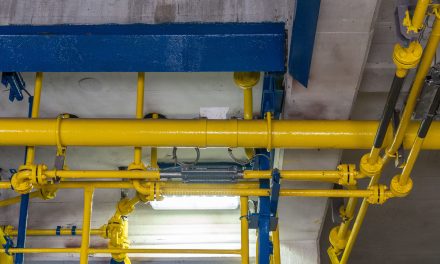Barrie Dowsett, CEO of Myriad Associates, explains how manufacturing companies can benefit from R&D Tax Credit claims.
Statistics show that manufacturing firms across the UK are becoming more aware of the impact R&D Tax Credits can have on their business.
Indeed, recent data from HMRC shows that in the year 2017-18 the level of support claimed within the manufacturing sector increased by 7%

The numbers that make up that percentage show 11,930 claims for research and development tax credits that year – up from 10,110 the previous year.
While it is clear progress is being made in the sector, there are thousands of businesses within the manufacturing industry that are missing out on this vital cash injection, with the main reason being they are not aware that it is there.
So what is R&D and how can firms claim back potentially thousands of pounds for their work?
How manufacturing companies can benefit from R&D Tax Credit claims
In its simplest form, R&D Tax Credits are a lucrative tax incentive that means UK companies can claim back a sizeable percentage – 33.35p for every £1 – spent on their research and development costs.
It allows companies that have developed products, processes, services, or software to receive a corporation tax deduction to reflect this expenditure, courtesy of HMRC, meaning companies that have made a loss can receive a cash payment instead.
The big issue, however, is that despite the scheme being around since the early 2000s, there are still a lot of manufacturing firms that still do not realise their projects are eligible for a claim.
Some businesses – mistakenly – believe their work isn’t innovative enough and would be surprised at just how much of the work they are doing means they are, in fact, in position to recoup a portion of their project spend.
Examples of eligible projects
Common manufacturing projects that are likely to attract R&D Tax Credits include:
Products
· Developing improved or second-generation products
· Products developed using computer-aided design tools
· Increasing the usability of a product
· Prototyping and three-dimensional solid modelling
· Using new materials which will enhance product performance
· Testing product prototypes
Processes
· Creating and maintaining innovative and cost-effective operational processes
· Devising and evaluating process alternatives
· Creating processes designed to meet new laws, regulations, and guidelines
· Investing in automation designed to streamline manufacturing processes
· Upgrading materials with a view to improving manufacturing processes
Computing
· Developing new software and programmes
· Designing innovative logic controllers
· Creating computer models
· Virtual, mixed and augmented reality modelling, and 3D modelling
Is your firm eligible for an R&D Tax Credit claim?
Whether a manufacturing company has created a new product, service, process or upgraded an existing one in order to claim for R&D Tax Credits, the project or business must:
· Be trading at the time the R&D Tax Credits claim is made
· Have been completed over the last two years
· Addressed a specific scientific or technological difficulty which, if resolved, would result in advancement across the sector
· Have undertaken an R&D project where the outcome was uncertain from the beginning, and which couldn’t have been easily solved by a professional working in the field
· Have spent money on the R&D, for example on staff and subcontractor payments, consumable costs, employer’s NIC and pension contributions and software licenses
· Have included all the costs concerned within the company’s Profit and Loss account, as it is not possible to claim R&D tax relief on Fixed Assets.
At this point, it’s advised that you check the government’s BIS Guidelines on the subject known as CIRD81900.
What information is required to make a claim?
R&D Tax Credit claims can be done by entering your enhanced expenditure into the full Company Tax Return form (CT600).
To work out your enhanced expenditure calculation you need to:
1. Ascertain which costs are attributable directly to R&D
2. Reduce any payments made to subcontractors or external staff to 65% of the original cost
3. Add all costs together
4. Multiply the figure by 130%. This will give you the additional deduction to put into your tax computations
5. Add this to the original R&D expenditure figure to achieve the enhanced expenditure amount which you can include in your tax return.
Can manufacturing firms still claim if its project was unsuccessful?
It’s important to note that even if the project was ultimately unsuccessful in its aims, R&D Tax Credits can still be claimed.
This is because it’s about the ‘journey’, not the ‘destination’.
What we mean is, as long as development has been made in science and/or technology then this is enough to claim. The extra capital generated can then be spent as the company sees fit, with many choosing to reinvest it into further R&D work.
Hopefully, this article has given a clear overview of the R&D Tax Credits scheme and who can claim.
We can’t emphasise enough though that if your manufacturing firm has recently undergone any project that has meant investing in science or technology – however small – then it will likely qualify. So don’t miss out.
Although we’ve covered the essentials here, there’s plenty about the (rather complex) claims process we’ve not addressed. Over-claiming and under-claiming is easy, and the larger amount of paperwork required makes getting into hot water with HMRC even easier.
This is why it’s strongly recommended you use the services of an R&D tax credit specialist.
Their teams of R&D tax professionals and technical experts will be able to tease out all the eligible costs (some of which won’t be obvious) and can make a fully optimised, accurate claim on your behalf.
Not only does this avoid a costly and stressful investigation by HMRC, but it also means you know you’re getting every penny you’re entitled to.


